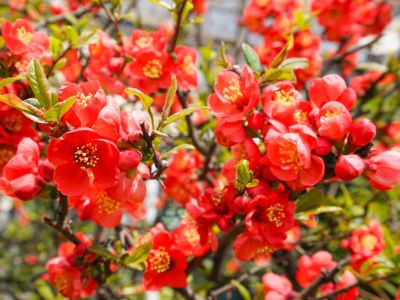Japanese Flowering Quince Shrubs
Today, most American gardeners who are growing Japanese flowering quince do so for the spring blossoms. The bright flowers erupt into bloom in March or April in vibrant shades of pink, white, orange or red that only last a few weeks. Some cultivars offer a few flowers again in autumn. Various species and cultivars exist, but the common flowering quince plants are most commonly planted. Common Japanese flowering quince shrubs grow to 10 feet (3 m.) tall and equally wide. They are thorned plants, so they serve well in a defensive hedge or along a property borderline. Although the fruits of flowering quince plants are edible, the fruit is very tart. You can make a jelly from the quince fruit, or simply leave a fruit in the house to provide a piquant fragrance. This shrub also differs from the quince fruit tree, which is commonly grown for its fruit.
How to Care for a Japanese Flowering Quince
Those who want to know how to care for a Japanese flowering quince are happy to learn that these are easy-care plants. They tolerate urban conditions and withstand drought stress. Growing Japanese flowering quince is not difficult, since these shrubs are tough and undemanding. They grow in sun or partial shade and accept most soils other than very wet ones. They will grow faster and bloom better if you provide irrigation during dry periods. The shrubs form compact and virtually impenetrable hedges. They are perfect territory for sheltering bird nests and the homes of other small wildlife. The most difficult task in flowering quince care is pruning a bush planted in too small a location to accommodate its full, mature size. On the other hand, flowering quince do accept severe pruning without problem, so don’t hesitate to cut the shrub down to the size you want.
